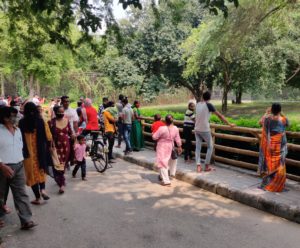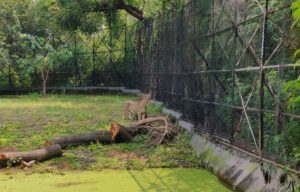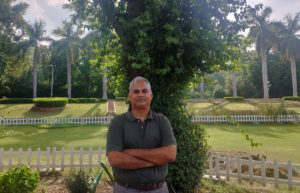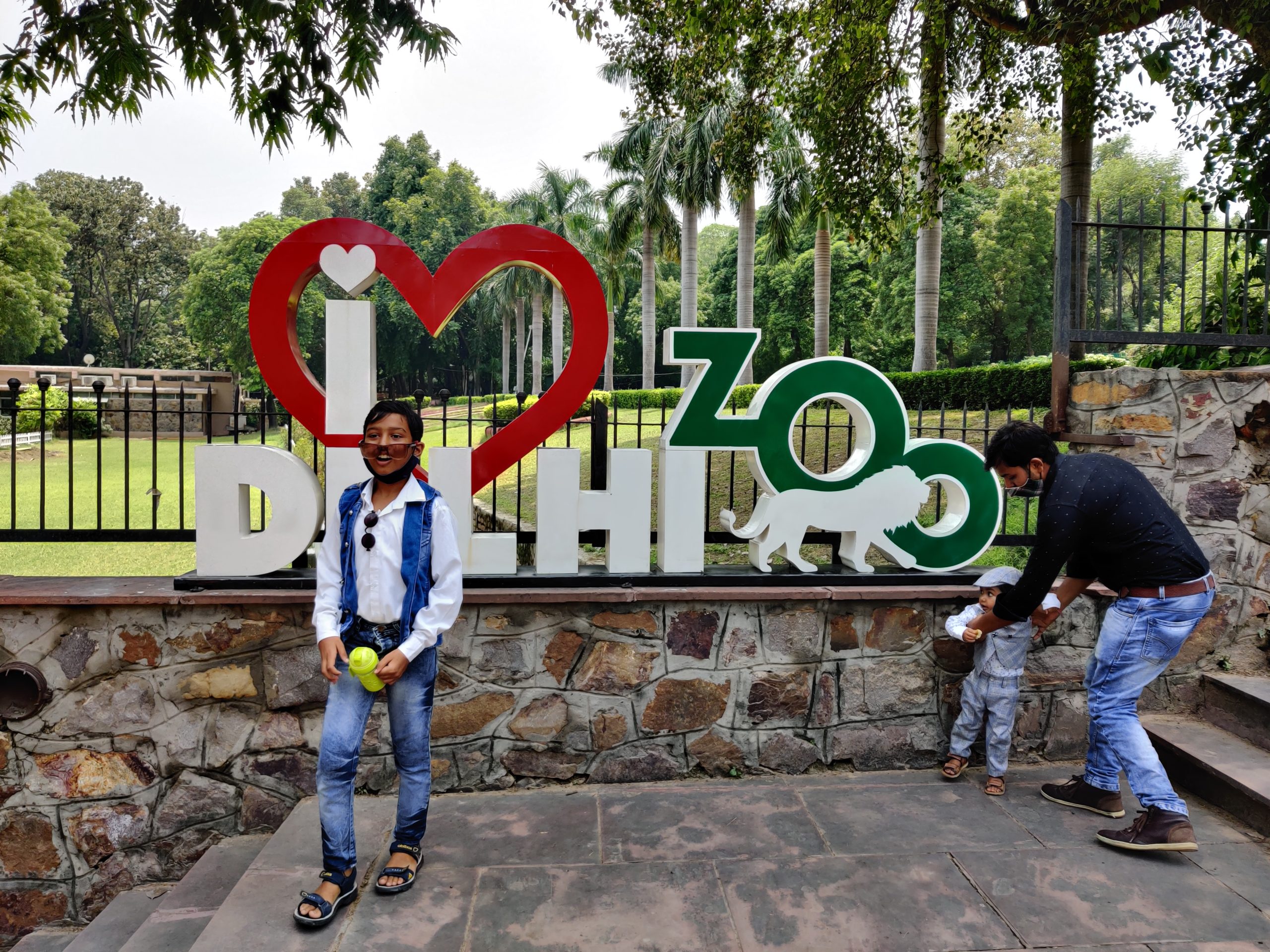Taking note of the welfare of animals in the Delhi Zoo, measures are being taken by the authority in place — thereby paving way for a more conducive environment
Since 2020, the world has been wound in a series of unusual and well, devastating circumstances. Around the same time, it has given a chance to National Zoological Park in Delhi to change many aspects, and reinvent itself, becoming, in the words of its newest director Ramesh Kumar Pandey, a “24*7 hospitality service.”
The watch over the 1,190 individual animals is now taken on in shifts, ensuring that at night too there are people around monitoring the animal’s wellbeing. This also means that those animals that are placed in night enclosures are opened into their open space early, like the lions let out into their arena as early as 6 am instead of the earlier 9:30-10am.
Pandey says “If a senile animal is having challenges or an animal is giving birth to say a fawn or a cub then you might not know what happened. It’s necessary that these enclosures are taken care of all throughout and then be able to inform the veterinarian of any development, even at night and get them treated. And also, our hospitals are now 24*7.”


“These are small changes, yet important ones. But these are risky things,” he adds, pointing out the risks being, giving responsibility to individuals of the animals. “There’s a responsibility on each keeper to take care of the animals, if something goes wrong, he can be asked. But in his absence if someone opens, then a system has to be maintained on releasing the animals, watching how the animal is being opened. Because once the keys are with the keeper, they are responsible. But in their absence the keys are not with them and anyone opens any gate, so you have to maintain a system — so someone is made responsible (each time) for the releasing of the keys and the animal’s behaviour during that time,” he further adds.
Another change incorporated has been prohibiting any petrol or diesel vehicles inside, with only bicycles allowed and the battery-operated vehicles which are present for visitors. In fact, the zoo gives off a pristine green look, perhaps backed by heavy monsoon showers that the Capital city has been receiving.

There has however been a conscious effort in cleaning up the zoo, making it worthwhile not just for visitors but especially its animals, as they live their lives in these enclosures. “I didn’t find it very difficult to operate, probably someone never thought of it. I’m someone who has worked in the field. I’m an In-Situ person, so I realised that small changes are big things for the animals,” he says.


While the country was closed down amid a surge in Covid cases, the zoo authorities could come together, chalk out and deliver changes before it opened to visitors. The zoo this year had its first phase of opening which lasted just about 10 days in April. With Covid numbers skyrocketing, it was again forced to close, reopening on August 1.
It was decided by the director, in keeping with the Covid protocol, to divide the opening time into two slots for visitors. One, from 8-12 pm and another from 1 to 5 pm with a capped limit of 1,500 people. The second slot, has in fact seen all slots full not just on weekends but on weekdays too, with the first slot seeing about 200-500 people.
Also, tickets are available online only.

With people visiting, it also means there’s a lot to manage, CCTVs are being installed to watch visitors, as well as of course the wellbeing of the animals. This will also help, Pandey reckons, in stopping those who like to tease animals. While this is one measure, he thinks the other step should be to work on conservation education “Which is the primary objective of the zoo. People should be taught how to act with animals. They are your fellow creatures, they are as good as you, rather they have many faculties that are better than us, but somehow, we lack that conservation education which would impart empathy and care.”
What may help in making visitors more aware of the animals and not just as a living thing to gawk over are audio tours. An app is being worked on, which should take about 3-4 months, allowing visitors to not just book their tickets, but download a map, and have an audio tour system which will work according to the GPS location on the person’s device.
“My focus is towards animals; zoo are for them first and then the people”
Patriot speaks to Ramesh Kumar Pandey — director of the National Zoological Park, Delhi
Ramesh Kumar Pandey, an Indian Forest Service (IFS) officer, has worked at the Wildlife Crime Control Bureau (WCCB), and held the position of Chief Conservator of Forests & Field Director, Dudhwa Tiger Reserve, amongst others. We speak with him about his role as director of the National Zoological Park, Delhi. How the lockdown was used to train, equip and better the zoo for its inhabitants.

You joined as the director of the zoo in April 2020, just as the pandemic hit India. How did that affect your work?
For animals it was a blessing in disguise, because many of them prefer silence, seclusion, privacy, isolation. At the same time, it was challenging (for us) as one has to keep sanitising the area, keep a watch on the people working around, especially their health. We also went through the bird flu phase so we have to be very cautious and on our toes.
Even though visitors were not coming, the daily activities were going on; the zoo is never closed. But instead of putting time into the management of the public, we had a good time for capacity building workshops, doing enrichments, doing some construction works, intervention to improve the welfare of the animals, improving the look of the zoo, removing debris, and cleaning the area.
Management was not easy, especially during lockdown. Recently many zoos have been found infected with Covid-19, particularly Chennai, Hyderabad, Mumbai, Jaipur. So, in a sense, there’s always concern hanging in the back of the head.
Along with the changes mentioned, were there more staff hired?
I have hired two education assistants, one doctor, one para vet, and one range officer. These are critical people for taking things forward scientifically. Running a zoo is an art based on science.
There are 20 beats in the zoo and every beat has 2-3 enclosures, and in total we have more than 60 enclosures. We have 20 zoo keepers who are assigned with 1-2 assistants, which are daily paid workers. Earlier they had no training, (but now) they are being trained as well.
We taught them about animal behaviour, how to see the animal, and how the enrichment of the animal can make them happy. That thought had to be inculcated in the mind that the focus is the welfare of the animal.
The biggest criticism that zoo authorities face is that we are not concerned about animals or focused on animals, or empathetic or compassionate. So, (to counter that) the whole team should be on the same line of thought. During the lockdown we had enough time to call them, build their capacity and train them through informal talks.
Another change that you are making is adding CCTV cameras…
In the country, we are probably those who are most intensively installing CCTVs to see the movements of the people, and the animals. See how the animals are behaving and eating. We probably would be one of the best in the country – everything is under watch, if they are eating properly, if they are unwell.
We are also coming up with a command house which will be monitored throughout. This will probably be ready in another month or two.
You’ve also initiated some studies to understand the stress in animals in captivity?
We are pushing, rather we are involving academia, to take studies based on animal activities in captivity. Three students of MSC from Amity University have come up with research work, one was on primates: on how enrichment plays an important role in their activity. Then, on the free ranging animals in captivity using camera traps and third was comparing the similar environment outside.
We noticed that doing enrichment work was helping the animals, but we wanted to establish it with evidence based scientific methods.
We interacted with people who work in this field, particularly veterinary science and came across that the stress levels of animals can be accessed based on the cortisol hormones found in their excreta. There had been some study in the case of elephants. We spoke with Nanaji Deshmukh Veterinary Science University and we signed an MOU with them wherein they would try and access the cortisol’s hormone levels.
So, samples were taken when the zoo was closed to the public and then again, as the zoo has reopened to the public. The third level will be after we have taken steps for enrichment. We want to see how we will be able to lower the level of cortisol with intervention, that will give some insight on how interventions can help them.
Enrichment are three kinds; structural, social – not putting them alone, allowing them to be in groups, watching their stress cycle – and third is food enrichment.
But the African elephant is by itself…
We take elephants out for morning walks every day and the two Indian elephants are taken together with the African one. But the African one is not much tamed as they had come at a young age. They are obstinate, not easy to manage, especially in the case of Shankar the African elephant.
His enclosure was cleaned after a very long time. But bringing another African elephant is difficult, there aren’t many here in Indian zoos.
What do you want to accomplish while you’re here?
Earlier we had 83 species, now we have 93, my target is 100. We have proposed some exchanges with zoos. We got some species from Chandigarh, now Raipur, and two exchanges from Visakhapatnam from where we’ll be getting wild dogs and star tortoises.
We will also be getting lions from Gujarat and we will be giving our hippos to them in exchange, because we have a large number of them.
Does your experience working in conservation bring a different phase for the zoo?
I would say yes, because I had experience in working in In-situ – protecting an endangered species in its natural habitat. Most people think zoos are easier, but I found it an underestimated assignment, as it’s extremely challenging. We have seen animals in the wild, and the things which we could not understand in the wild, like its ethology is easier here, so it compliments your knowledge of In-situ experience.
It (also) gives you a soft corner for the animals, you are more pro animal welfare kind of a person. Instead of focusing on the logistics and the PR, but more working towards the comfort of the animals. My focus of course was towards animals; zoos are for them first and then the people. So that connection comes from working in the field.
(Cover: Delhi Zoo)
(All photographs by Sashikala VP)





